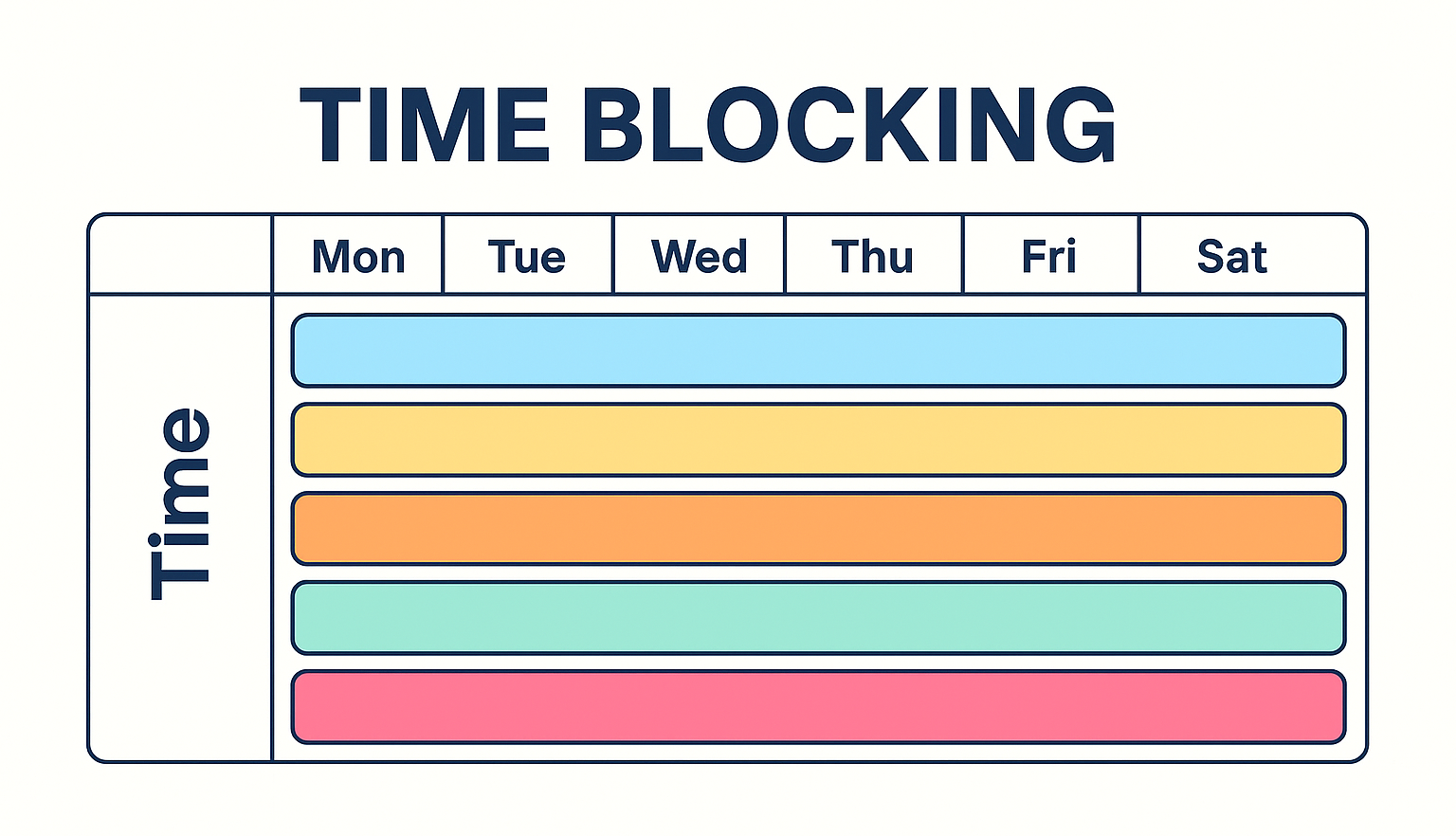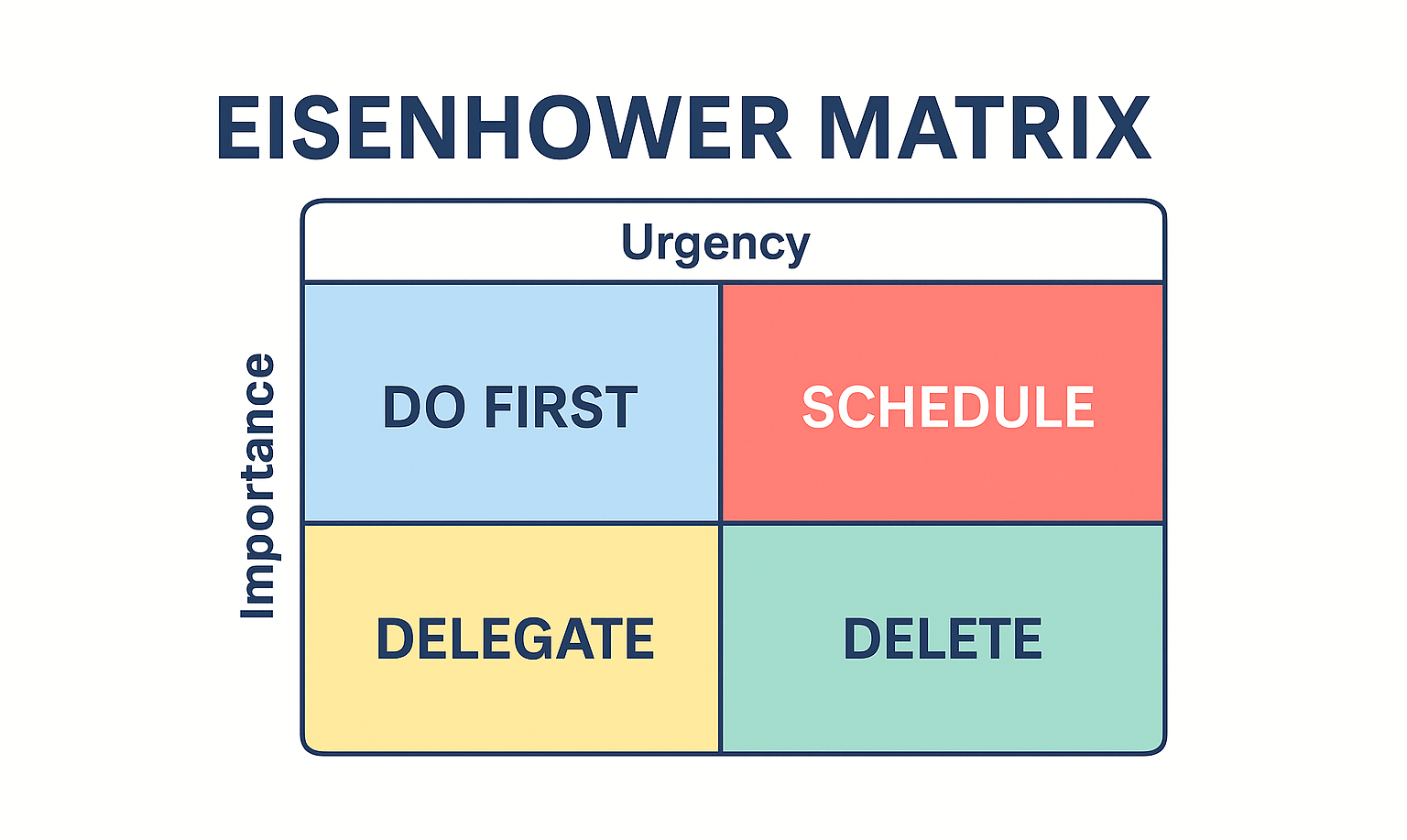Time Blocking for TRIO Students: A Proven Strategy for Academic Success
Discover how time blocking helps TRIO students boost productivity, reduce stress, and balance academics with life. This guide offers practical steps, tools, and tips to implement this proven strategy for lasting success.

Time blocking is a proven time management technique that divides your day into focused, intentional segments for specific tasks. For TRIO students, this strategy can be a game-changer. It helps manage academic responsibilities, personal development, and extracurricular commitments with greater clarity and control—ultimately boosting student success.
What is Time Blocking and Why It Matters for TRIO Students?
Time blocking is the practice of scheduling your day into defined blocks of time, each dedicated to a single task or group of related tasks. This method reduces distractions, limits multitasking, and enhances productivity. For TRIO students—who often juggle coursework, jobs, and family obligations—time blocking offers a structured way to stay on top of responsibilities while reducing stress and decision fatigue.

Key Benefits of Time Blocking in TRIO Programs
- Increased Productivity: Focused time blocks reduce task-switching and help students stay engaged with their work.
- Improved Academic Performance: Structured study sessions improve information retention and learning outcomes.
- Reduced Stress and Anxiety: Pre-planned schedules eliminate the need for constant decision-making, creating mental clarity.
- Better Work-Life Balance: Students can allocate time for self-care, social activities, and rest without compromising academic goals.
Step-by-Step Guide to Implementing Time Blocking
- List and Prioritize Tasks: Start by capturing all academic, personal, and extracurricular tasks. Use tools like the Eisenhower Matrix to categorize tasks by urgency and importance.
- Theme Your Days: Assign specific types of work to different times of day. For example, reserve mornings for deep academic work, afternoons for administrative tasks, and evenings for creative or social activities.
- Create Manageable Time Blocks: Break your day into 60–90 minute blocks. Include buffer periods between tasks to allow for transitions and unexpected delays.
- Use Digital Tools: Platforms like Google Calendar, Todoist, and Notion help visualize and manage your schedule. Calendly is great for booking advising sessions.
- Review and Adjust Regularly: Conduct daily or weekly reviews to assess what’s working and make necessary adjustments. Flexibility is key to long-term success.

Recommended Tools for TRIO Professionals
- Google Calendar: Ideal for visual scheduling and syncing across devices.
- Notion: Excellent for project management and team collaboration.
- Todoist: Great for capturing and prioritizing tasks.
- Calendly: Simplifies scheduling with students and colleagues.
Common Challenges and How to Overcome Them
- Procrastination: Set mini-deadlines within each block to create urgency.
- Underestimating Task Duration: Conduct time audits to better estimate how long tasks actually take.
- Overcommitment: Build in buffer time to avoid burnout and accommodate last-minute changes.
- Rigid Scheduling: Leave open blocks or “flex time” to adapt to unexpected needs.
Research-Backed Effectiveness
Studies show that time blocking can increase task completion rates by up to 40% by minimizing multitasking and improving focus. It also reduces the cognitive load associated with frequent decision-making, helping students enter a state of flow more easily. Neuroscience supports this: uninterrupted work sessions enhance creativity, problem-solving, and long-term retention.
Best Practices for Sustainable Time Blocking
- Categorize Clearly: Separate high-focus academic tasks from routine admin work.
- Automate Where Possible: Use tools to streamline scheduling and reduce manual coordination.
- Adapt Frequently: Revisit and revise your schedule based on feedback and changing priorities.
Conclusion
Time blocking is more than a productivity hack—it’s a life skill that can transform how TRIO students manage their time, reduce stress, and achieve their goals. By integrating this method into TRIO programming, professionals can equip students with a sustainable framework for academic and personal success.
🎧 Listen to this article—and others like it—on our site. Subscribe now to unlock audio access and stay up to date with ideas, tools, and resources that support TRIO student success.




